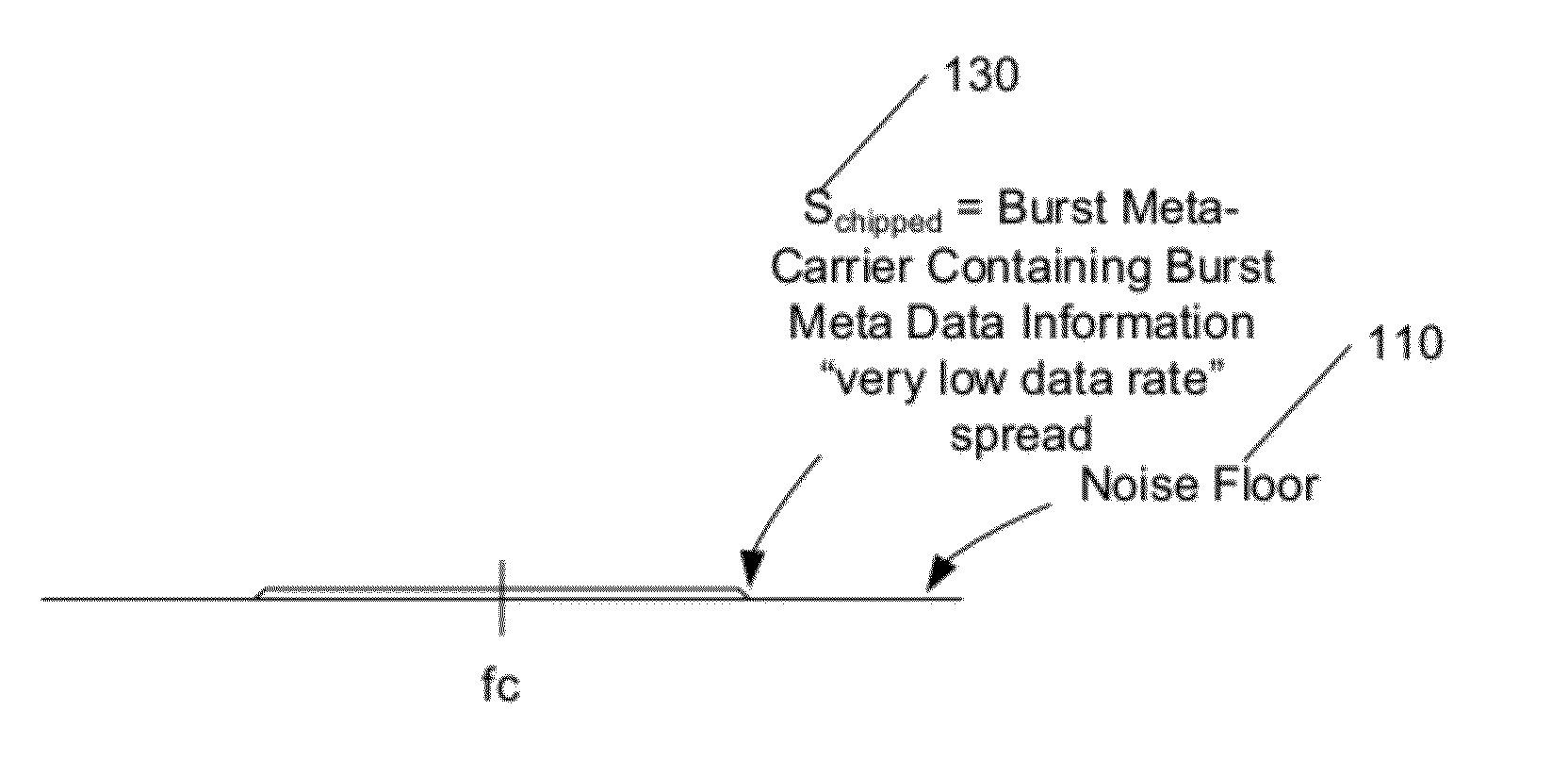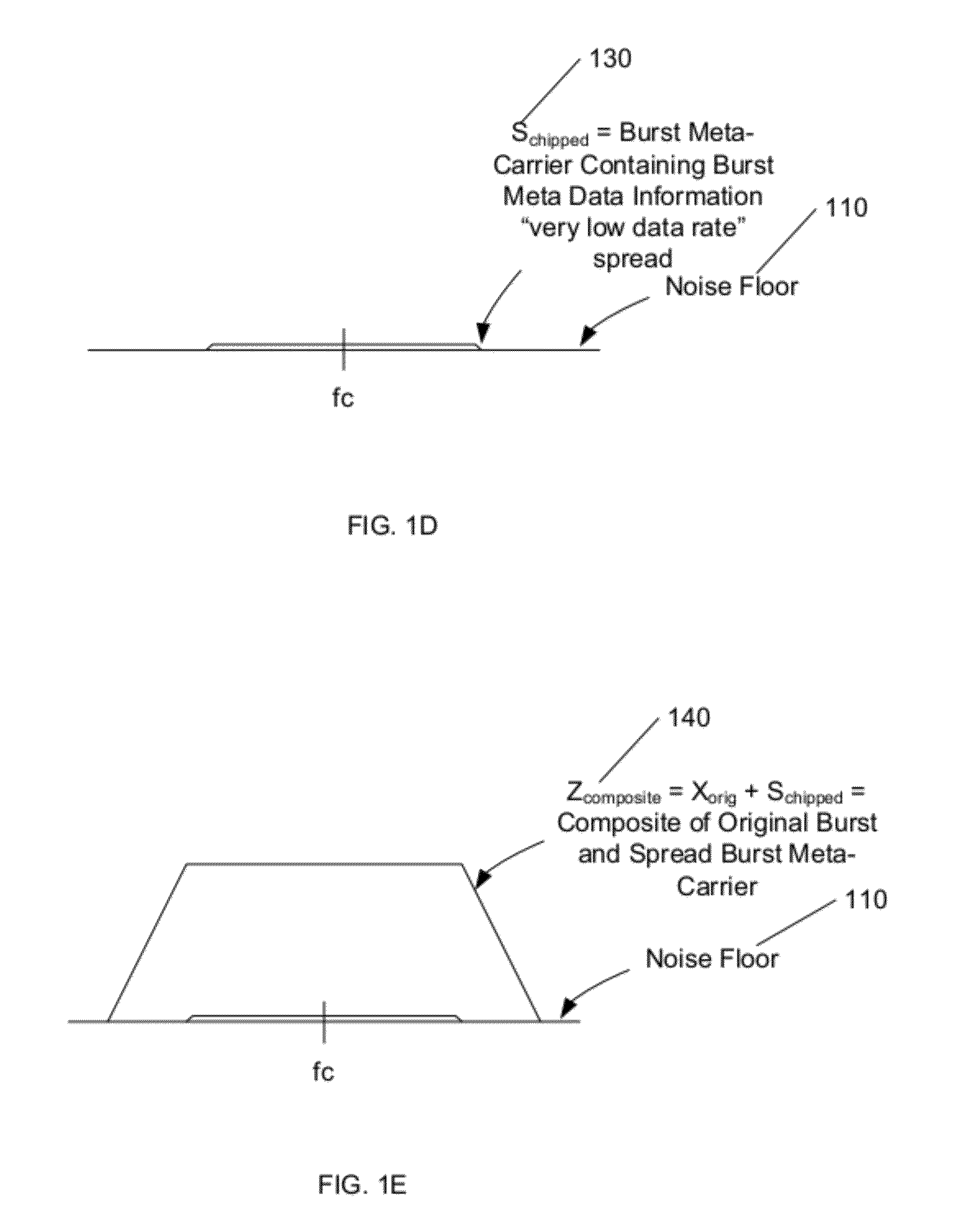Embedded Meta-Carrier with Code Progression Message Reassembly
a meta-carrier and code progression technology, applied in the field of telecommunication systems and transmission techniques, can solve the problems of primarily improperly configured carrier signals, transmission equipment transmitting or sweeping the wrong spectral location, and the identification of periodic-burst carriers, so as to reduce interference with the original burst carrier signal and reduce the power spectral density
- Summary
- Abstract
- Description
- Claims
- Application Information
AI Technical Summary
Benefits of technology
Problems solved by technology
Method used
Image
Examples
example 2
[0071]In particular implementations of the system described in Example 1, the satellite burst transmit station receives a burst time plan that does not allow a full meta-data message to be transmitted, but is longer than the minimum threshold under which no meta-data message is to be sent. The meta-data is transmitted as described in Example 1, but only a portion of the meta-data is transmitted. The meta-data information and PRN sequence is stopped at the closure of the transmit aperture and will resume on the next transmit opportunity.
example 3
[0072]In particular implementations of the system described in Example 1, the satellite burst transmit station receives a burst time plan that does not allow a full meta-data message to be transmitted and is shorter than the minimum required to transmit a meta-carrier message. In this example, no meta-carrier signal is transmitted.
example 4
[0073]A satellite burst transmit station is configured to operate in a burst format at an assigned center frequency, occupied bandwidth and power level to a satellite. For this example, the satellite burst transmit station is configured to operate with a particular method implementation using a stepped PRN sequence embedding method. For this example, the burst time planner at the hub-earth station has assigned the satellite burst transmit station enough symbols to transmit an entire meta-data message in a single burst. When the transmit opportunity is realized, the preamble of the burst carrier signal is transmitted, the burst meta-data is chipped and the burst meta-carrier is then created, combined, and transmitted with the original burst carrier signal's data. The meta-data continues to repeat and the PRN sequence continues to progress. The meta-data information and PRN sequence is stopped at the closure of the transmit aperture and will step forward to the assigned break point in...
PUM
 Login to View More
Login to View More Abstract
Description
Claims
Application Information
 Login to View More
Login to View More - R&D
- Intellectual Property
- Life Sciences
- Materials
- Tech Scout
- Unparalleled Data Quality
- Higher Quality Content
- 60% Fewer Hallucinations
Browse by: Latest US Patents, China's latest patents, Technical Efficacy Thesaurus, Application Domain, Technology Topic, Popular Technical Reports.
© 2025 PatSnap. All rights reserved.Legal|Privacy policy|Modern Slavery Act Transparency Statement|Sitemap|About US| Contact US: help@patsnap.com



